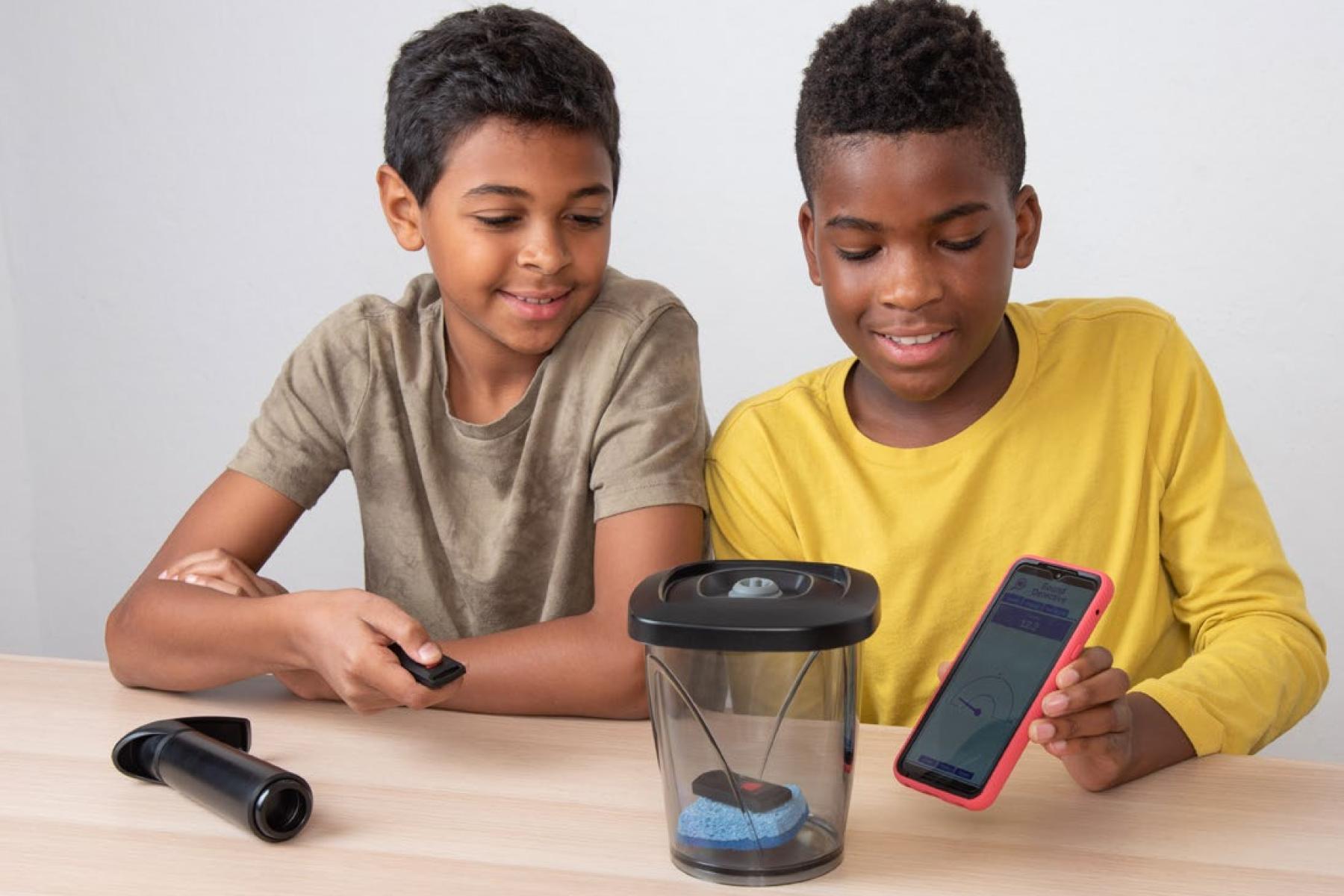DESCRIPTION
In this activity, learners will experiment with a remote key finder in a partial vacuum. A remote key finder uses radio waves to transmit a signal to the receiver, and sound waves to make a loud beep. After removing the air from a hand-pump vacuum chamber, participants will explore what happens to the waves with less air around the remote key finder receiver in the chamber. An optional extension to this activity includes instructions for participants to make-and-take their own sound detectors from cups, plastic wrap, a rubber band, and a pinch of sand.
Please note: Try installing the Sound Detector app on an Android device to provide more precise observations. Link to the Google Play store provided below.
DESCRIPTION
In this activity, learners will experiment with a remote key finder in a partial vacuum. A remote key finder uses radio waves to transmit a signal to the receiver, and sound waves to make a loud beep. After removing the air from a hand-pump vacuum chamber, participants will explore what happens to the waves with less air around the remote key finder receiver in the chamber. An optional extension to this activity includes instructions for participants to make-and-take their own sound detectors from cups, plastic wrap, a rubber band, and a pinch of sand.
Please note: Try installing the Sound Detector app on an Android device to provide more precise observations. Link to the Google Play store provided below.
TRAINING VIDEOS
OBJECTIVES
LEARNING GOALS
Radio waves are different from sound waves—they do not require air, water, or another medium to travel.
We take advantage of the properties of radio waves to communicate over vast distances, even through space.
DOWNLOAD FILES
- Messages from Space activity guide w/table sign (PDF)
- Messages from Space facilitator guide (PDF)
- Messages from Space infosheets (PDF)
- How to Build A Sound Detector instructions (PDF)
- Sound Detector App QR code sign (English & Spanish) (PDF)
- Messages from Space activity guide w/table sign (Spanish) (PDF)
- Messages from Space infosheets (Spanish) (PDF)
- How to Build A Sound Detector instructions (Spanish) (PDF)
Credits
Developed with funding from the National Science Foundation under Award Number 2053160. Any opinions, findings, and conclusions or recommendations expressed in this product are those of the authors and do not necessarily reflect the views of the Foundation.
Creative Commons Attribution Non-Commercial Share Alike 3.0 United States (CC BY-NC-SA 3.0 US).
View more details

NISE Network products are developed through an iterative collaborative process that includes scientific review, peer review, and visitor evaluation in accordance with an inclusive audiences approach. Products are designed to be easily edited and adapted for different audiences under a Creative Commons Attribution Non-Commercial Share Alike license. To learn more, visit our Development Process page.





